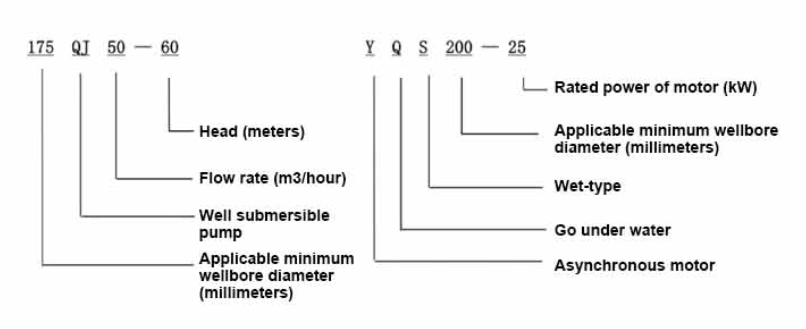Nov . 23, 2024 08:09 Back to list
how do i pull a submersible well pump
How to Pull a Submersible Well Pump A Step-by-Step Guide
Pulling a submersible well pump can be a daunting task, but with the right approach and tools, it can be done effectively and safely. Whether you’re experiencing pump failure, need to perform maintenance, or want to replace an old pump, this guide will walk you through the process of pulling a submersible well pump.
1. Prepare Your Tools and Equipment
Before you begin, it's essential to gather the necessary tools. You will need
- A well pump pulling tool or a hoist - A pipe wrench - Socket set - Adjustable wrenches - Teflon tape - Safety gloves and goggles - A bucket or container for water
Ensure that you have a reliable power source if necessary and be prepared for some heavy lifting.
2. Turn Off Power
Safety should be your priority. Before doing any work on the pump, turn off the power supply. Locate the circuit breaker that controls the well pump and switch it off to prevent any electrical accidents during the process.
3. Remove the Well Cap
Next, you need to access the wellhead. Remove the cap from the well casing carefully, being cautious not to damage any components. This may require unscrewing bolts or clamps, depending on your well design.
Once you have access to the well, locate the discharge pipe connected to the pump. Use a pipe wrench to unscrew the fittings carefully. It’s advisable to keep a bucket or container handy to catch any residual water that may spill out during this process.
how do i pull a submersible well pump

5. Attach the Pulling Tool
With the lines disconnected, it’s time to attach the pulling tool. If you are using a hoist, ensure it is securely fastened to the pump assembly. Make sure you follow the manufacturer’s instructions for safe and effective attachment.
6. Start Pulling the Pump
Begin pulling the pump out of the well gently. It’s important to maintain a steady motion and avoid jerking to prevent damaging any cables or connecting parts. If the pump seems stuck, check for any obstructions or debris in the well that might be causing the blockage.
7. Inspect the Pump
Once you have successfully pulled the pump from the well, inspect it thoroughly. Look for any signs of wear, cracks, or damage. It’s crucial to identify any issues to determine whether you need to repair or replace the pump.
8. Replace or Repair
After inspecting the pump, decide whether to perform repairs or simply replace it. If you opt for a new pump, ensure that you get one that’s compatible with your existing system.
9. Reinstall the Pump
Follow the disassembly steps in reverse to reinstall the pump. Make sure all connections are secure, and replace the well cap firmly before turning the power back on.
In conclusion, pulling a submersible well pump is a manageable task if done with care and the right tools. Always prioritize safety, and don’t hesitate to seek professional help if you encounter difficulties during the process. Proper maintenance and timely inspections can help extend the life of your well pump, ensuring a reliable water supply for years to come.
-
Submersible Water Pump: The Efficient 'Power Pioneer' of the Underwater World
NewsJul.01,2025
-
Submersible Pond Pump: The Hidden Guardian of Water Landscape Ecology
NewsJul.01,2025
-
Stainless Well Pump: A Reliable and Durable Pumping Main Force
NewsJul.01,2025
-
Stainless Steel Submersible Pump: An Efficient and Versatile Tool for Underwater Operations
NewsJul.01,2025
-
Deep Well Submersible Pump: An Efficient 'Sucker' of Groundwater Sources
NewsJul.01,2025
-
Deep Water Well Pump: An Efficient 'Sucker' of Groundwater Sources
NewsJul.01,2025
-
 Submersible Water Pump: The Efficient 'Power Pioneer' of the Underwater WorldIn the field of hydraulic equipment, the Submersible Water Pump has become the core equipment for underwater operations and water resource transportation due to its unique design and excellent performance.Detail
Submersible Water Pump: The Efficient 'Power Pioneer' of the Underwater WorldIn the field of hydraulic equipment, the Submersible Water Pump has become the core equipment for underwater operations and water resource transportation due to its unique design and excellent performance.Detail -
 Submersible Pond Pump: The Hidden Guardian of Water Landscape EcologyIn courtyard landscapes, ecological ponds, and even small-scale water conservancy projects, there is a silent yet indispensable equipment - the Submersible Pond Pump.Detail
Submersible Pond Pump: The Hidden Guardian of Water Landscape EcologyIn courtyard landscapes, ecological ponds, and even small-scale water conservancy projects, there is a silent yet indispensable equipment - the Submersible Pond Pump.Detail -
 Stainless Well Pump: A Reliable and Durable Pumping Main ForceIn the field of water resource transportation, Stainless Well Pump has become the core equipment for various pumping scenarios with its excellent performance and reliable quality.Detail
Stainless Well Pump: A Reliable and Durable Pumping Main ForceIn the field of water resource transportation, Stainless Well Pump has become the core equipment for various pumping scenarios with its excellent performance and reliable quality.Detail
